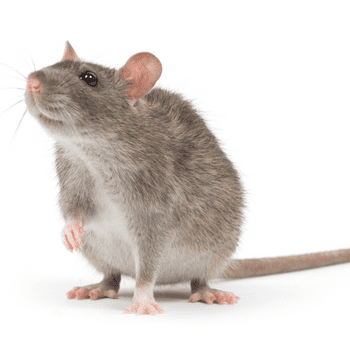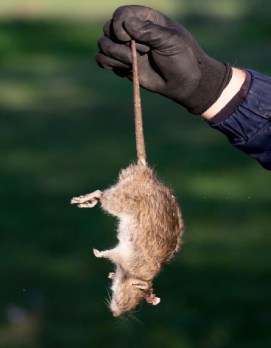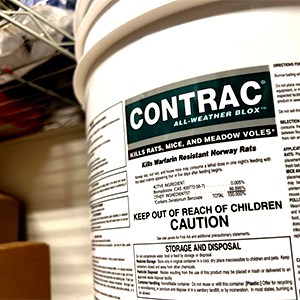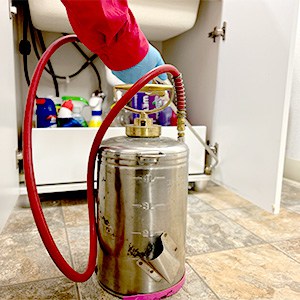RAT EXTERMINATION
YOU’VE TRIED EVERYTHING AND THE RATS KEEP COMING BACK?
Rat Extermination & Control

Rats are pests that can cause a lot of trouble, and can be difficult to get rid of. They contaminate and eat any food scraps and storage that they can gain access to, damage property such as furniture and building structures, and can spread diseases and parasites to other animals and humans alike. Rats are hardy creatures and can thrive in hostile environments if they are able to obtain basic needs like food and shelter. Because of this, professionals are needed to properly get rid of rats and keep them from returning in the future.

Identifying Rats
They can squeeze into and through a very small place to gain entry. This makes it difficult to keep them out unless you are trained and experienced in locating, identifying and sealing exclusion points. There are literally hundreds of millions of dollars lost to damage and contamination done by rodents annually.
What To Look For
One common type of rat that lives in and around the Pacific Northwest is the Norway rat, also known as the brown rat, wharf rat, or sewer rat. Norway rats can grow to shocking sizes, and are some of the biggest rodents that can be found in our area. Aside from their size, other identifying features of this type of rat are that they have coarse, shaggy fur that is brown and black in color. One can also determine if they have a Norway rat infestation on their hands by the shape of their droppings: Norway rat droppings have blunt ends. Female Norway rats have about three to six litters every year. Like mice, they don’t have a long lifespan.
Norway rats often cause property damage, and they like to nest in burrows next to buildings, in low ground cover, beneath sidewalks and concrete pads, in railroad track beds, and other places. They also take up residence inside of buildings, basements, sewers, crawlspaces, and loading docks. Any gap or hole larger than half an inch is fair game for an adult Norway rat to slip through. Aside from the food contamination and property destruction that Norway rats bring, they are also known to spread diseases such as leptospirosis. Independent Pest Solutions’ pest control technicians are highly experienced in dealing with Norway rats, so contact us if you notice any signs of infestation.




Roof rats are another type of rodent that lives in close association with humans. One major difference between them and Norway rats is that roof rat tails are usually longer than their bodies. Roof rats have smooth, brown and black fur. Roof rat droppings are usually smaller than those from Norway rats, and taper off at the ends. Like other rodent species, roof rats live less than a year and females of the species produce multiple litters a year.
Roof rats like to nest in trees. When they live inside of buildings, they usually inhabit the upper levels, such as the attic. Like other rodent varieties, roof rats will eat any food that they have access to, such as vegetables, cereals, and fruits. Not only can they contaminate food, but they can cause significant damage to structures. Roof rats are also known to spread diseases such as leptospirosis and parasites.
Eliminate those Rats with Independent Pest Solutions
The longer you wait before getting help for a rat infestation, the worse the problem will become. If you notice any signs that rats are living on your property, it is important that you contact Independent Pest Solutions as soon as possible. We will carry out effective exclusion and extermination services so that you won’t have to worry about rats again.
We can exterminate the Following Types Of Rats:
House mice
Norway rats
Pack rats
Roof rats
Services
Rat Extermination FAQs
Can I still feed the squirrels and have a bird feeder without having to worry about rats in my yard, or do I have to decide?
In short, yes, you can’t have it both ways. If you are providing food for squirrels and birds, then pests such as rats will also have access to it. Rats are intelligent and opportunistic creatures. If there is food available, they will be drawn to it. Bird feeders will attract rats to your property, advertising that there’s an easy food source there. If you have dogs and feed them outside, then this can also attract rats. Kibbles can fall on the ground and get left there, which will draw rats to the area. Although rats may steer clear if there are big dogs on the property, birds at a bird feeder will not keep them at bay whatsoever.
I am not concerned about rats getting underneath my house, so can you just ensure that they can’t get into my working and living space?
With all of the pieces of a building, including electrical wiring, plumbing pipes, and more, it isn’t really possible to seal rats out of your house while still letting them inhabit your crawl space. Rats are capable of squeezing through tiny holes and chewing through a lot of materials that houses are constructed from. When rats chew on electrical and water lines, they can cause significant property damage. The most effective and complete way to conduct rodent remediation is to seal them out of the attic and crawlspace entirely, so that they have no access to the building.
I keep seeing rats running along my fence, and I find it disgusting. Can you take measures to keep them off my property completely?
Unfortunately, rodents such as rats are creatures that exist in nature. Although we can prevent them from entering your home with exclusion methods, keeping them from coming onto your property at all is another story. We cannot keep rats from going into your yard, but we can take steps to control the local rat population. Our pest control technicians can put rodent bait stations at strategic locations, which we can refresh or refill as a part of a routine service program. These will work to decrease the rat population and hopefully ward them away from your property.
Committed
to Cleaning and
Excellence
Hassle-free
Leave us a Message
Contact Independent Pest Solutions
Get In Touch
Call toll-free
In Puyallup call
14611 Meridian East
Ste B Puyallup, WA 98374

